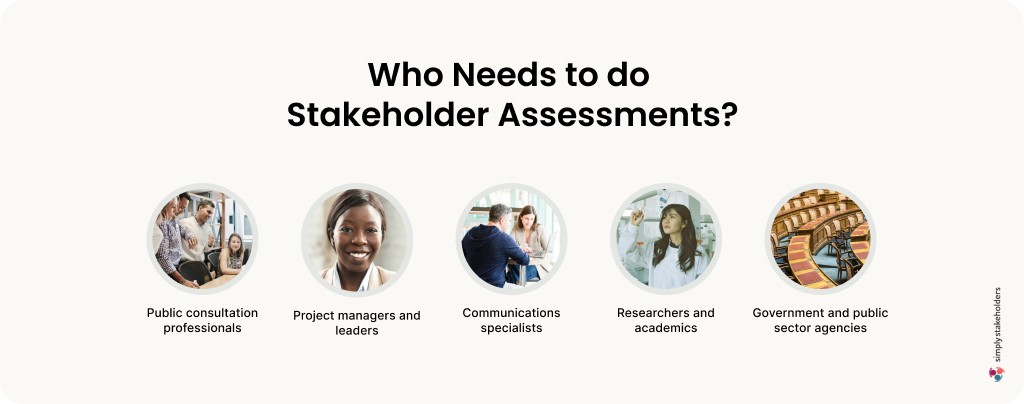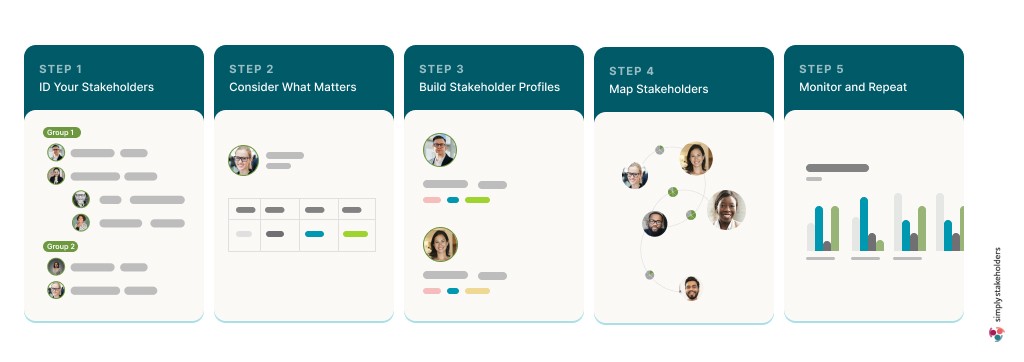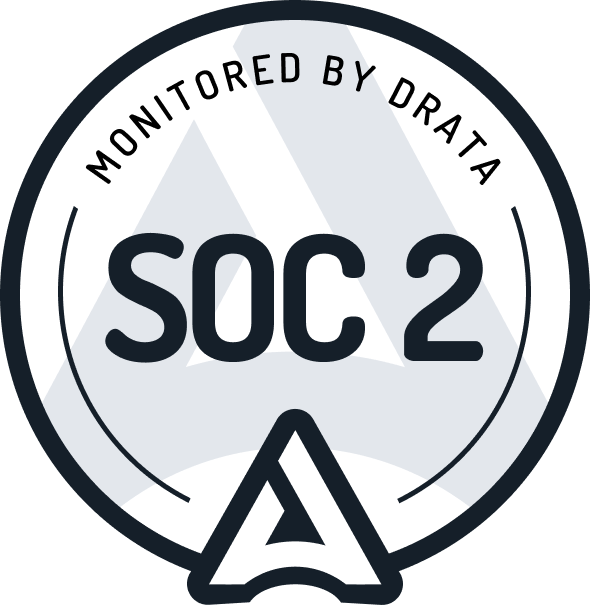Advanced stakeholder management
How to Conduct a Stakeholder Assessment
What is a stakeholder assessment and when should you undergo one? And what’s the best process...

What is a stakeholder assessment and when should you undergo one? And what’s the best process to conduct a stakeholder assessment?
We cover everything you need to know…
What is a Stakeholder Assessment?
A stakeholder assessment involves identifying and analyzing your stakeholders — the people, organizations, or groups that might be impacted by, have an influence on, or have an interest in a project, policy, or program.
In other words, stakeholder assessment encompasses both stakeholder identification and stakeholder analysis. It answers questions such as:
- Who are the stakeholders?
- What stake do they hold?
- What are their characteristics?
- Who are my key stakeholders?
- What’s my relationship with them?
- What relationships exist between my stakeholders?
- What issues do they care about?
- What are their perspectives, expectations, and preferences?
- Who should I engage with first?
- Who should I engage with most often?
Generally, the purpose of a stakeholder assessment is to create a clear plan for the project, and to plan the stakeholder engagement or management process. It can also allow you to conduct stakeholder mapping and to place stakeholders into categories for prioritization, tailored communication, and to ensure a more effective engagement.
In summary, a stakeholder assessment is a crucial project management exercise that lays the foundation for successfully navigating stakeholder relationships and mitigating risks through strategic engagement planning.
Who Needs to do Stakeholder Assessments?
Stakeholder assessments are frequently conducted by stakeholder engagement and public consultation professionals, as part of their overall stakeholder planning process.
However, stakeholder assessment can also be a useful exercise for project managers and leaders that need to identify stakeholders, develop strategies, and create plans for their project or organization.
Communications specialists can also benefit from using a stakeholder assessment to better understand their audiences, the issues they care about, and how they might respond to different messages.
It’s also common for researchers and academics to do some level of stakeholder assessment to understand the environment in which they plan to conduct their research and programs.
Government and public sector agencies also regularly undergo stakeholder assessment in order to understand the potential impact of policy change, to inform legislative processes, and to understand who may influence their program or project.
Finally, the nonprofit sector may use stakeholder assessment processes to develop their own programs and projects. In particular, with a view to ensuring the local community is properly understood, represented, and involved, while also considering the concerns of other stakeholders such as government groups, other NGOs, and donors.
What Are the Steps in a Stakeholder Assessment?
Here’s a step-by-step process you can follow to conduct your own stakeholder assessment:
1. ID Your Stakeholders
If you’ve read some of our previous content, you’ll know that any stakeholder process nearly always starts here. You’ll need to identify your stakeholders — that is, the people, groups, and organizations that could be impacted by your project, have an influence on, or an interest in it. In this step, put your thinking cap on and if someone is a potential stakeholder, go ahead and add them to your list. Don’t worry too much about stakeholder importance, as that will come next.
2. Consider What Matters
Before you can prioritize your stakeholders, you have to know what attributes or characteristics could make someone a primary stakeholder. For instance, it might be their proximity to the project, their level of influence, the potential degree of impact, their connectedness within the community, their degree of acceptance/opposition, their degree of positive/negative sentiment, or perhaps something else entirely.
3. Build Stakeholder Profiles
Now that you know what you’re looking for, it’s time to go out and gather what data you can on the stakeholders on your list. This data might include demographic info, work info, interests, attitudes, concerns, issues, priorities, relationships, sources of information, level of knowledge, expectations, communication preferences, and more. Depending on what information you have to work with, you might gather this information from people within your organization, by speaking to your stakeholders directly, by sending out surveys, through observation, or some other means.
4. Map Stakeholders
There are a number of stakeholder mapping methods to choose from, and various diagrams that will allow you to organize and visually represent the data you gathered in step 3. The methods you choose will depend on what matters most for your stakeholder assessment, as identified in step 2. We particularly like stakeholder relationship mapping and the Three I’s Method of Stakeholder Mapping (Impact/Influence/Interest) — but some of the other approaches can have their place, too.
After mapping your stakeholders, you should be able to clearly see some patterns emerge, allowing you to segment your stakeholders into groups that require a specific approach. For instance, some stakeholders will need engagement about specific issues, you’ll need to engage with some groups first, and it’s likely that your key stakeholders will require you to engage more frequently than others. You should be able to use these insights to create your stakeholder management plan, stakeholder engagement plan, communication plans, project plans, strategic business plans, or whatever else you’re working on.
5. Monitor and Repeat
Stakeholder assessment is an ongoing process. At certain intervals or points in the project, you’ll likely need to revisit your stakeholder assessment. That’s because people and projects often change. Sometimes stakeholders move on and new stakeholders take their place. With this in mind, it’s important to verify that the original information (and resulting analyses) is still correct. In addition to this, you’ll nearly always learn more about your stakeholders as you go on, so be sure to capture this information and use it in your analysis and mapping, and then adapt your plans and strategy accordingly.
Pro tip: it’s so much easier to keep track of your stakeholders, analyze them, conduct stakeholder mapping, and keep your records updated with modern stakeholder software like Simply Stakeholders. Learn more about why you need stakeholder software or reach out to our team if you’d like a personalized demo of our tools.
Examples of Stakeholder Assessment
Post-Project Stakeholder Assessment
You might also conduct a stakeholder assessment after the project is complete. For instance, this study assessed stakeholders who had participated in planning a tourism project via local workshops or project meetings. Participants were asked about any other stakeholders they consider relevant to the planning process, but who hadn’t been present during this process. This particular assessment was aimed at understanding whether the types of stakeholders who participated in the planning process accurately represented the stakeholders affected by the project.
Stakeholder Assessment to Understand Risk Perceptions & Support
For example, a study looked at the perceptions of coastal hazards and risks, and support for mitigation strategies across three different stakeholder groups in Hawaii. The assessment found that each stakeholder group perceived risks differently, which impacted their support for mitigation strategies (and who should pay for them). By analyzing stakeholder correspondence (as well as other data) the study looked at the relationships between stakeholder attributes and their level of support for coastal interventions.
Using Stakeholder Assessment to Design a Study & Achieve Consensus
A stakeholder assessment was conducted in order to study and identify cropping systems that may help to improve water quality in catchment areas. This assessment involved interviewing various stakeholders involved in a catchment improvement programme, gathering diverse viewpoints on criteria preferences for cropping systems. These interviews allowed the researchers to determine five stakeholder groups based on five distinct sustainability preferences. Cropping systems designed with local farmers were assessed based on these five preferences, leading to open discussion on their potential as alternatives within the drinking water catchment — and all stakeholder groups were able to agree that some of the systems were (at least, in theory) highly sustainable.
Learn More
Keen to build on what you know? We’ve got plenty more insights where that came from. Check out:
- Stakeholder Analysis: One (Critical) Mistake Almost Everyone Makes
- Stakeholder Engagement Plans: Quick Start Guide
- The Importance of Stakeholders in Business
- Who are the Stakeholders in Offshore Wind Energy Projects?
- Who Are The Key Stakeholders in Renewable Energy Projects?
- Four Key Stakeholder Management Processes for Project Managers





